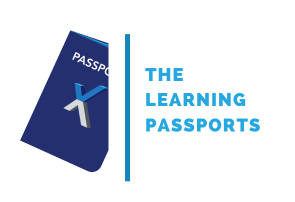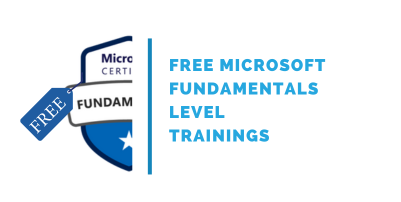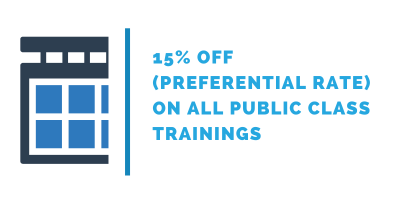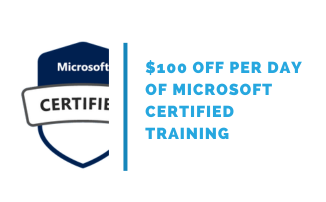
Microsoft Certified: Power Platform Developer Associate (PL400)

The PL-400 course, also known as the Power Platform Developer course by Microsoft, is designed for professionals aiming to master the development aspects of Microsoft's Power Platform. This certification focuses on empowering individuals with the skills and knowledge required to build efficient solutions using Power Apps, Power Automate, Power Virtual Agents, and Power BI.
This course embarks you on a transformative journey into the realm of Microsoft Power Platform development. Designed for aspiring Power Platform developers, this comprehensive course equips you with the skills and knowledge needed to leverage the full potential of Power Platform tools, enabling you to create custom solutions that drive business innovation.
This training is a comprehensive preparation for the PL-400: Microsoft Power Platform Developer exam to earn the Microsoft Certified: Power Platform Developer Associate certification.

Public class
2875$
Duration:
5 days / 35 hours
Private class
Virtual classroom
Minimum no. of participants: 5
5 days / 35 hours
Price on request
English or French
Training plan:
Microsoft Power Platform Developer (PL-400T00)
Module 1: How to build your first model-driven app with Dataverse
- Introduction to Dataverse
- Introduction to model-driven apps
- Model-driven apps, powered by Microsoft Dataverse
- Explore sample apps
Module 2: Get started with model-driven apps in Power Apps
- Introducing model-driven apps
- Components of model-driven apps
- Design model-driven apps
- Incorporate business process flows
Module 3: Manage tables in Dataverse
- Identify tables and table types in Dataverse
- Create a custom table
- Enable attachments within a table
- Licensing requirements for each table type
Module 4: Create and manage columns within a table in Dataverse
- Define columns in Microsoft Dataverse
- Column types in Microsoft Dataverse
- Add a column to a table
- Create a primary name column
- Restrictions that apply to columns in a table
- Create an auto numbering column
- Create an alternate key
Module 5: Working with choices in Dataverse
- Define choice column
- Standard choices column
Module 6: Create a relationship between tables in Dataverse
- Relate one or more tables - Introduction
- Relationship types that are available in Microsoft Dataverse
- Create a one-to-many relationship between tables
- Create a many-to-many relationship between tables
- Edit or delete relationships
Module 7: Define and create business rules in Dataverse
- Define business rules - Introduction
- Define the components of a business rule
- Create a business rule
Module 8: Create and define calculation or rollup columns in Dataverse
- Introduction to rollup columns
- Create a rollup column
- Introduction to calculation columns
- Create a calculation column
Module 9: Get started with security roles in Dataverse
- Introduction to environment roles
- Understand environment roles
- Adding or disabling an environment user
- Understand security concepts in Dataverse
- Understand user security roles and security role defaults
- Check the roles that a user belongs to
- Configure Dataverse teams for security
- Configure Dataverse group teams for security
Module 10: Get started with Power Apps canvas apps
- Introduction to Power Apps
- Power Apps building blocks
- Ways to build Power Apps
- Power Apps related technologies
- Additional Power Apps related technologies
- Designing a Power Apps app
Module 11: Customize a canvas app in Power Apps
- Improve apps by making basic customizations in Power Apps
- Create a navigation model for your canvas app
- Explore screens and controls in Power Apps
Module 12: Manage apps in Power Apps
- Power Apps review
Module 13: Navigation in a canvas app in Power Apps
- Understanding navigation
- The navigation and back function
- More ways to use the navigation function
Module 14: How to build the UI in a canvas app in Power Apps
- Use themes to quickly change the appearance of your app
- Branding a control
- Icons
- Images
- Personalization
- Using the tablet or phone form factors
Module 15: Use and understand Controls in a canvas app in Power Apps
- Introduction to controls
- Core properties of controls
- Entering and displaying data with text controls
- Additional controls for enhancing your app's usability
- Media
Module 16: Document and test your Power Apps application
- Create test plans
- User interface testing
- Performance optimization
- Diagnostics and analytics
- Documentation and the customer
Module 17: Use imperative development techniques for canvas apps in Power Apps
- Imperative versus declarative development
- The three types of variables in Power Apps
- Global variables
- Contextual variables
- Collections
- Additional variable concepts
Module 18: Create formulas that use tables, records, and collections in a canvas app in Power Apps
- Formulas that process multiple records
- Math operations on tables
- Combine and separate records
- The ForAll function
Module 19: Perform custom updates in a Power Apps canvas app
- Sometimes you need something more than forms
- Using the Patch function to create and edit records
- Deleting record(s) from data sources and collections
- Using Patch function to update a Gallery
Module 20: Complete testing and performance checks in a Power Apps canvas app
- The importance of thinking about performance
- Improve performance with data sources
- Testing and troubleshooting your app
Module 21: Work with relational data in a Power Apps canvas app
- What is relational data?
- Work with relationships in Power Apps
- Microsoft Dataverse for apps makes relationships even easier
Module 22: Work with data source limits (delegation limits) in a Power Apps canvas app
- Delegation overview
- Functions, predicates, and data sources combine to determine delegation
- Delegation warnings, limits, and non-delegable functions
Module 23: Connect to other data in a Power Apps canvas app
- Overview of the different data sources
- Work with action-based data sources
- Power Automate is a companion to Power Apps
Module 24: Use custom connectors in a Power Apps canvas app
- Overview of custom connectors
- Overview of the custom connector lifecycle
- Use postman for your custom connector
Module 25: Get started with Power Automate
- Introducing Power Automate
- Troubleshoot flows
Module 26: Build approval flows with Power Automate
- Provide solutions to real-world scenarios
Module 27: Introduction to expressions in Power Automate
- Introduction to expressions
- Get started with expressions
- Notes make things easier
- Types of functions
- Write complex expressions
Module 28: Introduction to Microsoft Power Platform developer resources
- Introduction to Microsoft Power Platform for Developers
- Overview of Microsoft Dataverse and the Common Data Model
- Extending Power Platform with Azure
Module 29: Use developer tools to extend Microsoft Power Platform
- Introduction to developer Microsoft Power Platform tooling
- Solutions overview
- Deploy apps with Package Deployer
Module 30: Introduction to extending Microsoft Power Platform
- User experience extensibility
- Microsoft Dataverse extensibility
- Determine when to configure or when to code
Module 31: Introduction to Dataverse for developers
- Introduction to developing with Microsoft Dataverse
- Microsoft Dataverse extensibility model
- Event framework
Module 32: Extend plug-ins in Power Platform
- Plug-ins usage scenarios
- Plug-in execution context
Module 33: Perform common actions with client script in Power Platform
- Introduction to client-side scripting
- Upload scripts
- Event handlers
- Context objects
- Client scripting common tasks
Module 34: Automate business process flows with client script
- Introduction to conducting global operations with the client API Xrm object
- Client scripting best practices
- Debugging client script
Module 35: Get started with Power Apps component framework
- Introduction to Power Apps component framework
- Power Apps component framework architecture
- Power Apps component tooling
- Demo of Power Apps code component
Module 36: Build a Power Apps component
- Introduction to creating a code component
- Create a code component solution package
- Test and debug code components
Module 37: Use advanced features with Power Apps component framework
- Introduction to using React within a Power Apps component
- Use the formatting API in a Power Apps component
- Use the Microsoft Dataverse web API in a Power Apps component
- Write a pop-up Power Apps component
Module 38: Work with Dataverse Web API
- Introduction to the Microsoft Dataverse Web API
- Authenticate against Microsoft Dataverse by using OAuth
- Interact with Microsoft Dataverse Web API by using Postman
- Use OData to query data
- Use FetchXML to query data
- Call Power Automate actions from the Web API
- Use the Web API to impersonate another user
- Track entity data changes with change tracking and the Web API
Module 39: Integrate Dataverse Azure solutions
- Microsoft Dataverse Azure Solutions overview
- Expose Microsoft Dataverse data to Azure Service Bus
- Write a Service Bus Event Listener that consumes Microsoft Dataverse messages
- Publish Microsoft Dataverse events with webhooks
- Write an Azure Function that processes Microsoft Dataverse events
Exclusives:
- One FREE attendance to the Microsoft 365 Certified: Fundamentals (MS900) training - $695 value!
- One voucher to take the exam - $225 value!
- One year access to the class recording
- 180 days access to the lab environment after class
- Up to date courseware with Microsoft Learn
- Microsoft course achievement badge
Prerequisites:
- Candidates should have an introductory knowledge of Power Platfom
- Candidates should have development experience that includes JavaScript, JSON, TypeScript, C#, HTML, .NET, Microsoft Azure, Microsoft 365, RESTful Web Services, ASP.NET, and Power BI
Credentials information:
Exam Characteristics
- Exam code: PL-400
- Exam Title: Microsoft Power Platform Developer
- Exam Duration: 120 minutes
- Number of Questions: 4o to 60
- Questions Format: Multiple-choice, multiple-answer, scenario-based
- Passing Score: 700 out of 1000
- Cost: $0 (included in your training)
Exam Topics
- Create a technical design
- Configure Microsoft Dataverse
- Create and configure Power Apps
- Extend the user experience
- Extend the platform
- Develop integrations
- All details...
Follow-on trainings:
Audiences:
PL-400 Exam Overview
The PL-400 exam evaluates candidates on various aspects of Power Platform development. It covers topics such as designing Power Apps, creating effective workflows with Power Automate, integrating services, customizing user interfaces, and deploying solutions. The exam structure assesses practical application skills and proficiency in Power Platform development.
Preparation Strategies for PL-400 Exam Success
Preparing for the PL-400 exam necessitates a structured approach. Utilize official Microsoft resources, study guides, and training courses specifically tailored for PL-400. Engage in hands-on practice, explore diverse development scenarios, and familiarize yourself with advanced features of the Power Platform. Practice exams and mock tests are invaluable in evaluating readiness for the exam.
PL-400: Power Platform Development Expertise
The PL-400 certification serves as a testament to one's proficiency in developing solutions within the Microsoft Power Platform. It showcases the ability to create impactful applications, automate workflows, and design custom solutions that cater to unique business needs.
PL-400 vs Other Certifications
Comparing PL-400 with certifications like PL-100, PL-200, the PL-400 and PL-600 combined track, or others is essential for professionals aiming to choose the right certification based on their career objectives and skill sets. PL-400 specifically targets Power Platform development expertise, distinguishing itself by focusing on creating solutions using various Power Platform components.
Conclusion
In conclusion, the PL-400 Microsoft course represents an opportunity for professionals to specialize in Power Platform development. It validates expertise in building robust solutions and custom applications within the Power Platform ecosystem. Thorough preparation, practical experience, and a deep understanding of the Power Platform's development aspects are crucial in mastering and obtaining the PL-400 certification.
Frequently Asked Questions about PL-400 Certification
What is PL-400 certification used for?
The PL-400 certification, also known as the Power Platform Developer certification, is utilized for showcasing proficiency in developing solutions within Microsoft's Power Platform. It validates skills in building applications, automating workflows, and creating customized solutions using Power Apps, Power Automate, Power Virtual Agents, and Power BI.
Is the PL-400 exam hard?
The difficulty level of the PL-400 exam can vary depending on an individual's preparation, experience, and familiarity with Power Platform development. Thorough preparation, hands-on experience, and a deep understanding of the Power Platform's development aspects can significantly impact the perceived difficulty level of the exam.
What level is the PL-400 exam?
The PL-400 exam is classified as an intermediate-level exam within Microsoft's certification hierarchy. It is intended for individuals who possess a solid understanding of the Microsoft Power Platform, specifically focusing on designing, building, and troubleshooting Power Platform solutions.
How much do Power Platform developers make?
The salary of Power Platform developers varies based on factors like experience, location, and the specific job role. On average, Power Platform developers can earn competitive salaries, often ranging from $70,000 to $120,000 per year. However, these figures can significantly differ based on individual circumstances, industry demand, and the complexity of the projects undertaken.
Contact us for more information on pricing::
Eccentrix
Office: 1-888-718-9732
E-mail: info@eccentrix.ca
130, King Street West, Suite 1800
Toronto, Ontario M5X 1E3
www.eccentrix.ca







